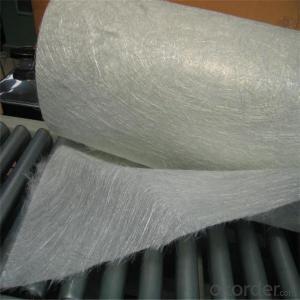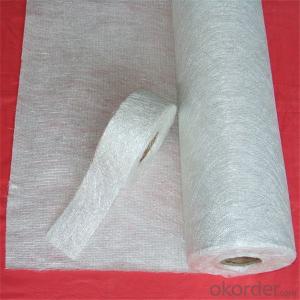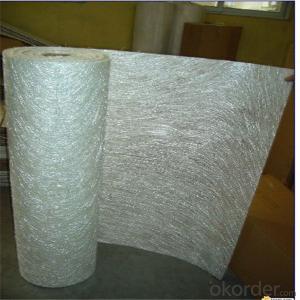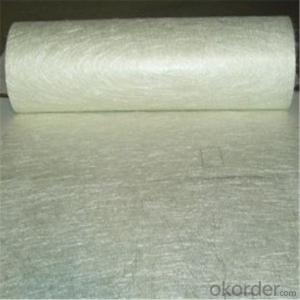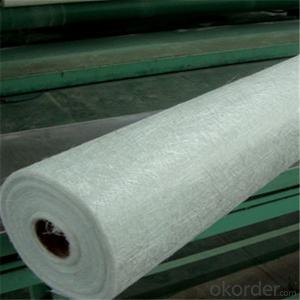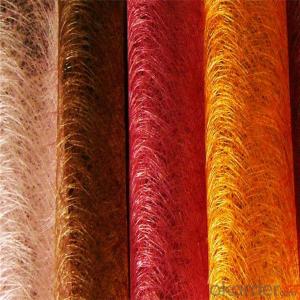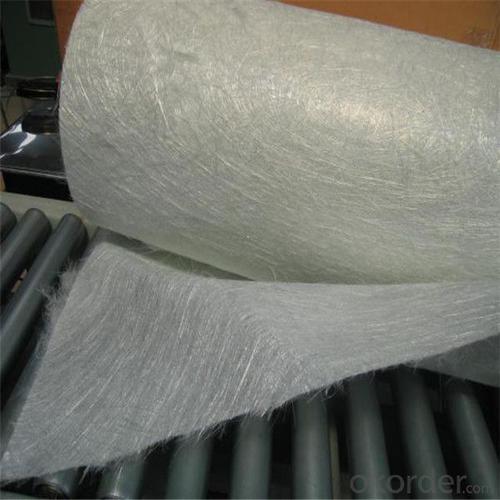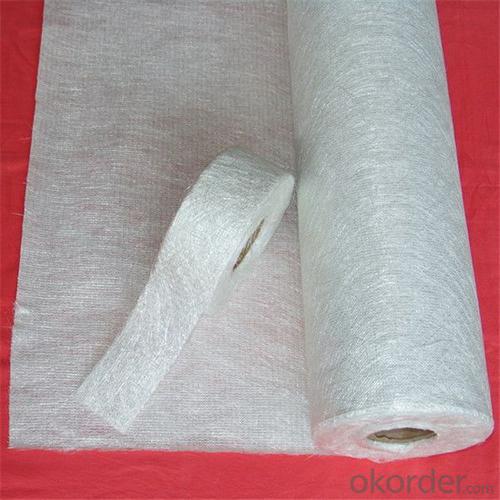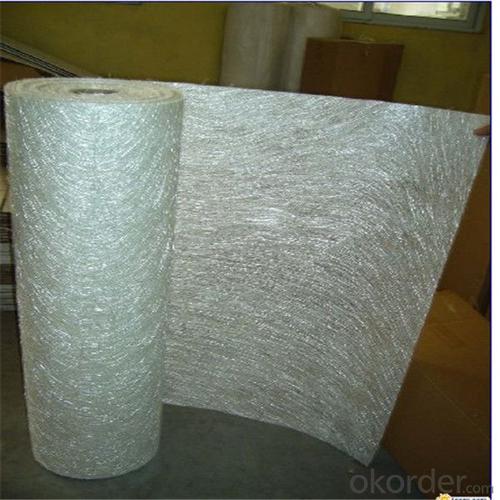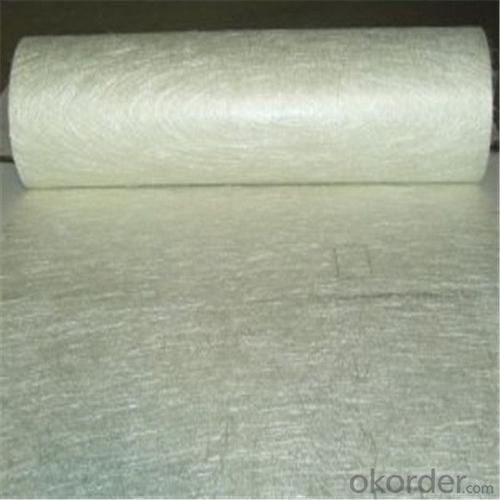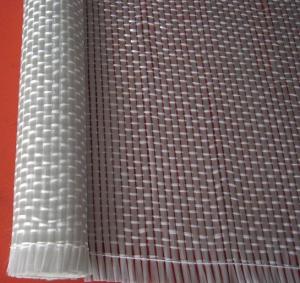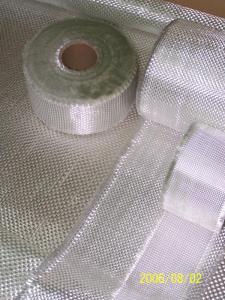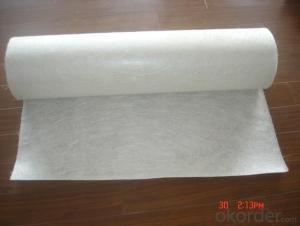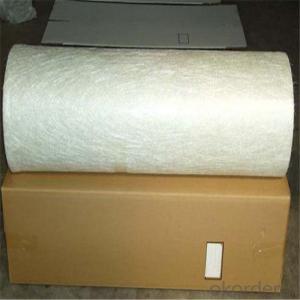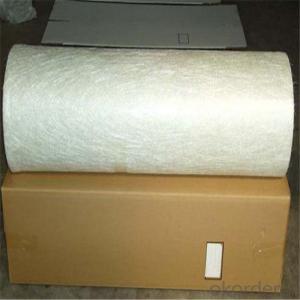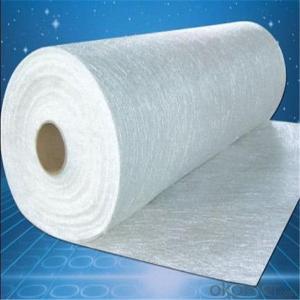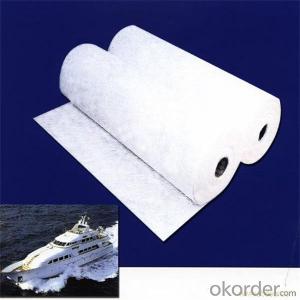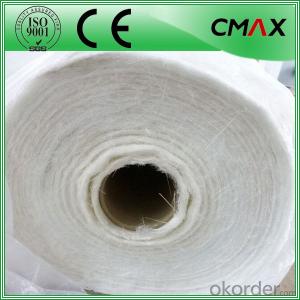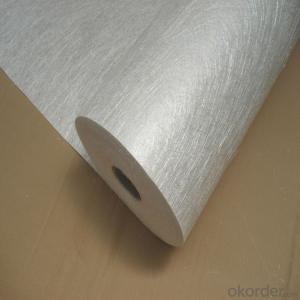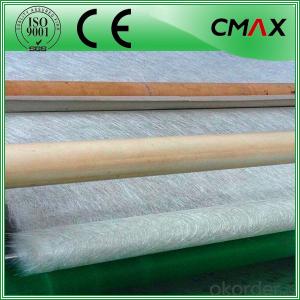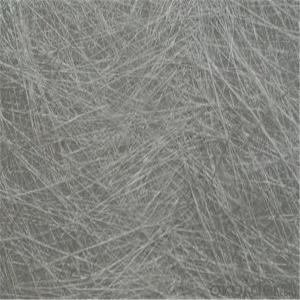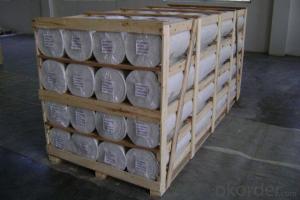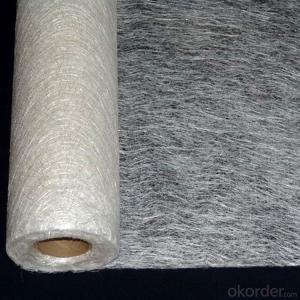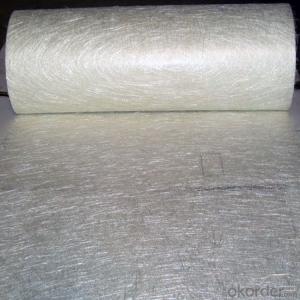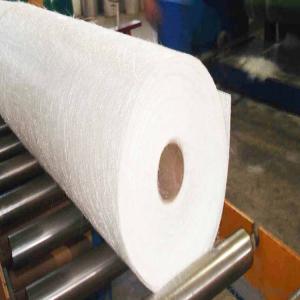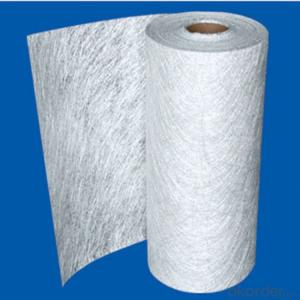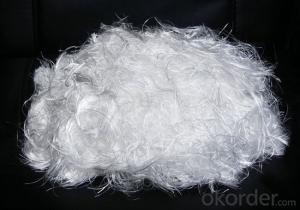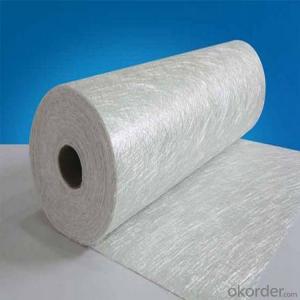Fiberglass Chopped Strand Mat for Sale for Repair
- Loading Port:
- Tianjin
- Payment Terms:
- TT OR LC
- Min Order Qty:
- 100 m.t.
- Supply Capability:
- 20000 m.t./month
OKorder Service Pledge
OKorder Financial Service
You Might Also Like
Quick Details
| Technique: | Chopped Strand Fiberglass Mat (CSM) | Dimensions: | according to customer's request | Mat Type: | Stitch Bonding Chop Mat |
| Fiberglass Type: | E-Glass | Softness: | middle | Place of Origin: | Jiangxi, China (Mainland) |
| Brand Name: | cnbm | Model Number: | CSMEP100,CSMEP120,CSMEP200,etc | Product: | Cooling Tower Building Glass Fiber Fiberglass Chopped Strand Mat(csm) |
| Color: | White | Width: | 1040mm,1250mm,ect. | Area weight: | 225-900g/m2 |
| Application: | filament winding,panpel,ect |
Packaging & Delivery
| Packaging Details: | Each roll in one polybag then to an export carton. |
| Delivery Detail: | Within 18 days after confirm order |
Fiberglass Chopped strand mat
Powder Strand Mats Product Features:
1) Uniform density ensures consistent fiberglass content and mechanical properties of the composites products.
2)Uniform powder distribution ensures good mat integrity, little loose fibers and small roll diameter.
3) Excellent flexibility ensures good mold ability with no spring back at sharp angles.
4)Fast and consistent wet-out speed in resins and rapid air lease reduce resin consumption and production cost and enhances productivity and mechanical properties of the end products.
5)The composite products have high dry and wet tensile strength and good transparency.
Picture
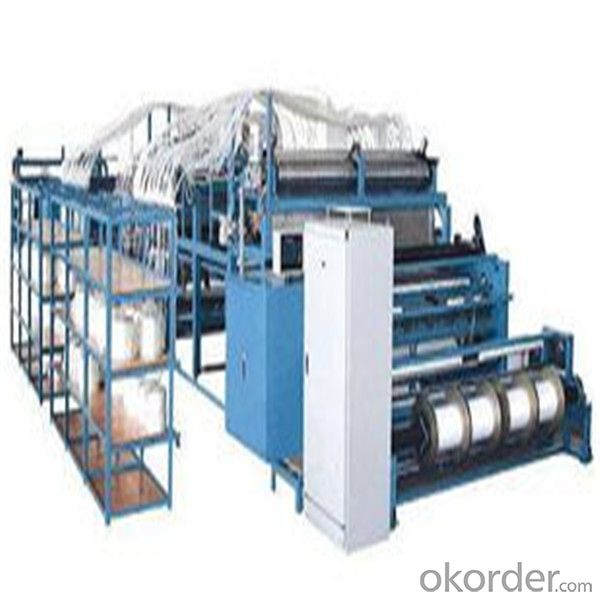
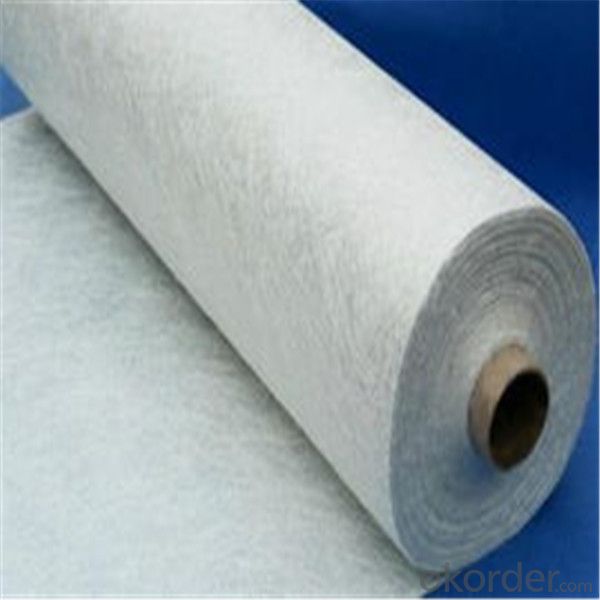
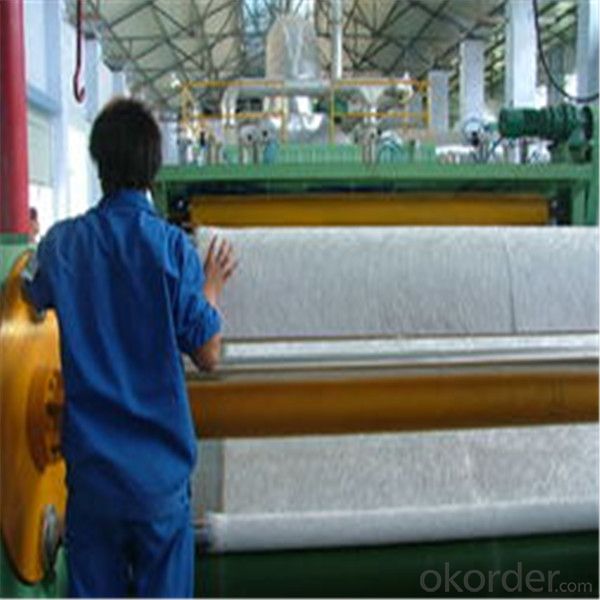
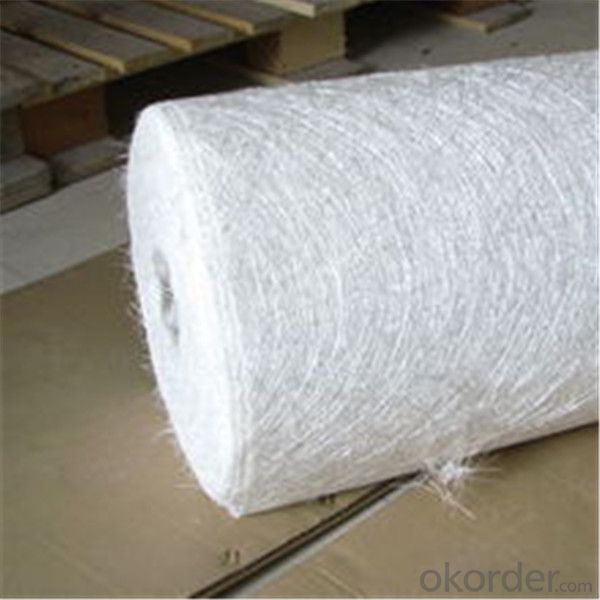
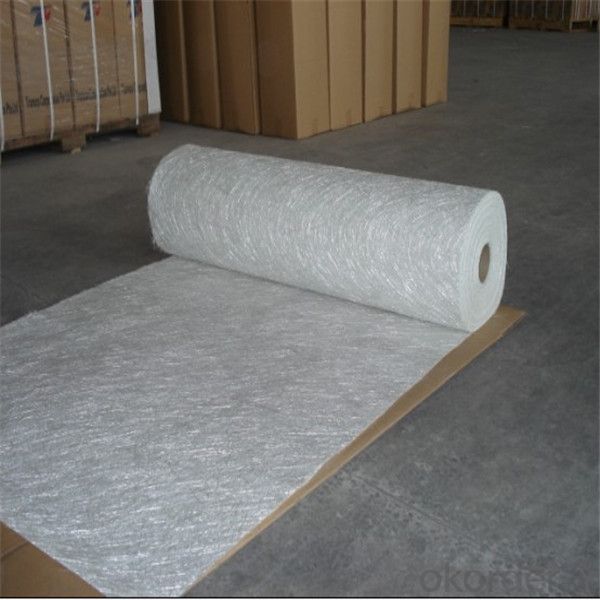
- Q: Is fiberglass chopped strand suitable for water treatment applications?
- Yes, fiberglass chopped strand is suitable for water treatment applications. Its high strength and corrosion resistance make it an ideal material for constructing water treatment tanks, pipes, and other equipment that come into contact with water. Additionally, fiberglass chopped strand is non-toxic and does not leach any harmful substances into the water, making it a safe choice for water treatment applications.
- Q: How is fiberglass chopped strand produced?
- Fiberglass chopped strand is produced through a multi-step manufacturing process. It begins with the selection of high-quality glass fibers, which are typically made from silica sand, limestone, and soda ash. These raw materials are melted in a furnace at extremely high temperatures, reaching up to 1600 degrees Celsius. Once the glass has melted into a molten state, it is then extruded through tiny orifices in a device called a bushing. The molten glass is forced through these orifices, which have a specific diameter and shape, to form continuous filaments of glass. As the filaments emerge from the bushing, they are rapidly cooled using a stream of cool air. This process, known as attenuation, solidifies the molten glass into solid fibers. The filaments are then collected onto a high-speed rotating drum or a conveyor belt. The next step involves applying a sizing material to the fibers. The sizing is a chemical solution that helps to protect the fibers from abrasion and improve their compatibility with various resin systems. This sizing material also helps to bind the fibers together during subsequent processing. After the sizing is applied, the fibers are then chopped into short lengths using a mechanical cutting mechanism. This process, known as chopping, can be done using different methods, such as rotary cutters or reciprocating blades, depending on the desired length of the chopped strands. The chopped strands are then collected and packaged for distribution. They can be used in various applications, such as reinforcing thermoplastics, thermosetting resins, and construction materials, where their high strength and flexibility properties are highly advantageous. In summary, fiberglass chopped strand is produced by melting glass raw materials, extruding the molten glass into continuous filaments, cooling and collecting the filaments, applying sizing material, chopping them into short lengths, and finally packaging them for use in different industries.
- Q: Can fiberglass chopped strand be used in the production of medical implants?
- Fiberglass chopped strand is not typically used in the production of medical implants. Medical implants require materials that are biocompatible, meaning they do not cause any adverse reactions or harm to the human body. Fiberglass chopped strand is made of glass fibers that may not meet the biocompatibility requirements for medical implants. It is more commonly used in industries such as automotive, aerospace, and construction. In the medical field, implants are often made from materials like titanium, stainless steel, or biocompatible polymers that have been extensively tested and approved for use in the human body. These materials have specific properties that make them suitable for implantation, such as their resistance to corrosion, ability to integrate with surrounding tissues, and compatibility with medical imaging techniques. Therefore, it is advisable to use materials specifically designed and approved for medical implant applications to ensure patient safety and optimal performance.
- Q: Is fiberglass chopped strand compatible with different surface treatments?
- Yes, fiberglass chopped strand is compatible with different surface treatments. As a versatile material, fiberglass chopped strand can be used with a variety of surface treatments to enhance its performance and appearance. Some common surface treatments include painting, coating, laminating, and gel coating. These treatments can help to improve the adhesion, durability, and resistance of the fiberglass to factors such as UV radiation, chemicals, moisture, and abrasion. Additionally, the compatibility of fiberglass chopped strand with different surface treatments allows for customization and versatility in various applications, including automotive, construction, marine, and aerospace industries.
- Q: Can fiberglass chopped strand be used in the production of bathroom fixtures?
- The production of bathroom fixtures can benefit from the use of fiberglass chopped strand. This reinforcing material is typically comprised of fine glass fibers that have been chopped into shorter lengths. It is commonly employed as a reinforcement in a variety of materials and products, including bathroom fixtures. Bathroom fixtures, such as bathtubs, shower trays, sinks, and toilet tanks, necessitate a resilient and robust material that can endure water, moisture, and regular usage. Fiberglass chopped strand is an excellent choice for fortifying these fixtures due to its impressive strength-to-weight ratio, resistance to corrosion, and ability to withstand water. To create a composite material for the production of bathroom fixtures, fiberglass chopped strand is usually combined with a resin matrix, such as polyester or acrylic. This composite material offers the necessary strength and durability required to withstand the demands of daily use in a bathroom setting. Furthermore, fiberglass chopped strand can be effortlessly molded into various shapes and sizes, allowing for the creation of customized and visually appealing bathroom fixtures. It can also be easily blended with other materials, such as gelcoats or colorants, to achieve desired surface finishes or colors. Overall, fiberglass chopped strand is a suitable and extensively utilized material in the production of bathroom fixtures due to its strength, durability, resistance to water, and versatility in design.
- Q: How does the impact resistance of the chopped strand affect its performance?
- The impact resistance of chopped strand has a direct impact on its overall performance. Chopped strand is typically used as a reinforcement material in various composite applications, where it provides strength and durability to the final product. The impact resistance of the chopped strand determines its ability to withstand sudden force or impact without breaking or deforming. A higher impact resistance means that the chopped strand will be able to absorb and dissipate energy more effectively when subjected to sudden impacts. This is particularly important in applications where the composite material may be exposed to external forces, such as in automotive parts, sporting equipment, or construction materials. When the chopped strand has a low impact resistance, it becomes more susceptible to cracking, breaking, or delaminating under impact loads. This compromises the structural integrity of the final product and reduces its overall performance and lifespan. The chopped strand may fail to provide the necessary reinforcement, leading to increased vulnerability to damage. On the other hand, a higher impact resistance enhances the performance and durability of the composite material. It allows the chopped strand to effectively absorb and distribute impact energy throughout the composite, minimizing the risk of damage or failure. This ensures that the final product can withstand the demands of various applications and environments. In summary, the impact resistance of chopped strand plays a critical role in determining its performance. A higher impact resistance enhances the overall strength and durability of the composite material, while a lower impact resistance increases the risk of damage or failure. Therefore, it is crucial to consider the impact resistance of chopped strand when selecting and designing composite materials for specific applications.
- Q: How does the electrical conductivity of the chopped strand affect its performance?
- The performance of chopped strand in different applications can be greatly influenced by its electrical conductivity. Generally, electrical conductivity refers to a material's ability to conduct electric current. In the case of chopped strand, which is typically made of glass fibers, the electrical conductivity can vary depending on factors such as the glass composition and the presence of coatings or treatments on the strands. One particular application where electrical conductivity plays a significant role is in composite materials. Chopped strand is commonly used as a reinforcement in composites to enhance their mechanical properties. However, if the chopped strand possesses high electrical conductivity, it can lead to problems associated with electrical grounding or interference. This can be particularly troublesome in applications that require electrical insulation, like electronic enclosures or aerospace components. Conversely, there are certain applications that can actually benefit from a higher electrical conductivity of the chopped strand. For example, in electromagnetic shielding applications, which aim to block or redirect electromagnetic radiation, a conductive chopped strand can improve the shielding's effectiveness. The conductive properties of the chopped strand can aid in dissipating or redirecting the electrical energy, thereby reducing its impact on the surrounding environment. Furthermore, the electrical conductivity of the chopped strand can also affect its resistance to electrical arcing or sparking. In high-voltage applications where the risk of electrical discharge is a concern, using chopped strand with lower electrical conductivity can help minimize the occurrence of arcing and potential damage to the material or surrounding components. To sum up, the electrical conductivity of chopped strand can significantly impact its performance in diverse applications. It is crucial to carefully evaluate the specific requirements of the application and select a chopped strand with the appropriate electrical conductivity to ensure optimal performance and avoid any potential issues related to electrical grounding, interference, or electrical discharge.
- Q: What does glass fiber do?
- It is a kind of excellent inorganic non-metallic materials, having the advantages of good insulation, good corrosion resistance, which is equivalent to a piece of hair. It is founding by high temperature with the raw materials of glass ball and waste glass. It has the advantages of high mechanical strength, electrical insulating and thermal insulation and heat resistance. Each bundle of fibers is made of hundreds or even thousands of root filaments. The diameter range from several microns to twenty micron.
- Q: What are the quality control measures for fiberglass chopped strand production?
- To ensure the production of high-quality fiberglass chopped strands, several quality control measures are undertaken. These measures encompass the following steps: 1. Inspection of Raw Materials: Prior to production, a thorough inspection is conducted on the raw materials used, including glass fibers and resins, to ensure their quality and adherence to specifications. This guarantees that only superior materials are utilized in the manufacturing process. 2. Control of the Production Process: Throughout the production process, close monitoring and control of various parameters are implemented to maintain consistency and quality. This involves regulating the temperature, pressure, and speed of the machinery employed. Regular checks and adjustments are carried out to ensure that the production parameters fall within the specified range. 3. Sampling and Testing: Regular sampling of the chopped strands occurs at different stages of production. These samples undergo various tests to assess their mechanical properties, such as tensile strength, flexibility, and dimensional stability. This aids in identifying any deviations from the desired quality standards and enables corrective actions to be taken. 4. Inspection for Quality: Finished products undergo a comprehensive inspection to evaluate their appearance, dimensions, and other physical properties. This ensures that the chopped strands meet the necessary specifications and are free from any defects or impurities. Visual inspections, as well as the utilization of specialized testing equipment, may be employed to verify the quality of the products. 5. Documentation and Traceability: Each batch of fiberglass chopped strands is assigned a unique identification number, enabling traceability and tracking throughout the manufacturing process. This facilitates the identification of any issues or discrepancies, enabling prompt corrective actions to be taken. 6. Continuous Improvement: Quality control measures extend beyond the production process alone. Feedback from customers, as well as internal audits and inspections, are utilized to identify areas for improvement. This aids in the implementation of corrective and preventive actions to enhance the overall quality control system. By implementing these quality control measures, manufacturers can produce fiberglass chopped strands that meet or surpass the required standards and customer expectations. This ensures the reliability, durability, and performance of the final products, rendering them suitable for various applications in industries such as automotive, construction, and aerospace.
- Q: Is fiberglass chopped strand resistant to mechanical stress?
- Fiberglass chopped strand possesses resistance to mechanical stress. Its high strength-to-weight ratio and impressive tensile strength are well-known attributes of fiberglass. Chopped strand, consisting of shorter fiberglass fibers, is widely utilized in different industries such as composites, construction, and automotive. This reinforcement material augments the mechanical properties of the end product, rendering it more resilient to mechanical stress and ultimately enhancing its durability. The random arrangement of the chopped strands also aids in distributing stress evenly throughout the material, further strengthening its resistance to mechanical stress. In conclusion, fiberglass chopped strand is a dependable and efficient material for enduring mechanical stress.
Send your message to us
Fiberglass Chopped Strand Mat for Sale for Repair
- Loading Port:
- Tianjin
- Payment Terms:
- TT OR LC
- Min Order Qty:
- 100 m.t.
- Supply Capability:
- 20000 m.t./month
OKorder Service Pledge
OKorder Financial Service
Similar products
Hot products
Hot Searches
Related keywords
